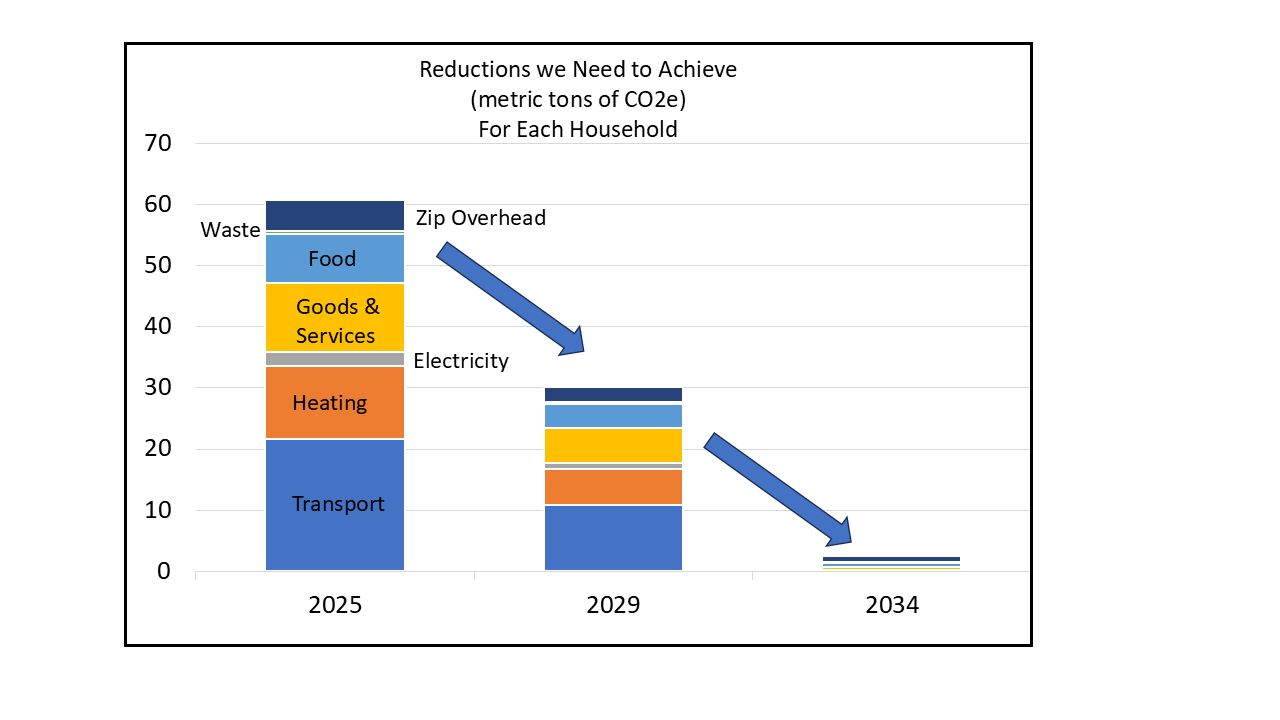A Lasting and Caring New Year’s Resolution
By Bob DeAngelis, Yorktown100
As the earth circles the sun, and a new year begins, it’s a great time for renewing our commitments towards something better. This year, how about committing to learning more about our impacts on the environment and taking action to reduce them? There are many areas that each one of our households impacts: water pollution, air pollution, land use, and greenhouse gas emissions to name a few. They are all important, but we will focus here on greenhouse gas emissions since this has the most potential for severe impact to life as we know it and time is of the essence.
Lessons Learned
My dad taught me a great lesson: When you use something that doesn’t belong to you, return it in better condition than when you got it. So, when you borrow a tool, clean or sharpen it. If you use someone’s house, clean it or fix something. In some way leave it better.
That lesson applies directly to how we treat our planet. If each year, we leave it cleaner, less polluted, and less harmed from a climate viewpoint, we have done our jobs and have shown we care about and respect other human beings and life forms.
Timeframe
Leading scientists have determined that we must keep warming less than 1.5 degrees C above pre-industrial temperatures. Once we exceed that, we will be standing on a precipice of immense proportions. Once we reach a “tipping point” the changes become greater and faster, and warming can spiral out of control. We will lose the ability to ever control the heating of our planet. For example, when the permafrost (areas that have been frozen for ages) melts, trapped methane is released into the atmosphere, causing even faster warming. So, time is of the essence. We are already near that tipping point, but could avoid the worst impacts if we act quickly.
Have you thought about what “sustainable” really means?
It means causing or made in a way that causes little or no damage to the environment and therefore able to continue for a very long time. For our purpose, this means forever. It is no surprise that our current mode of living is not sustainable. Each year there are more people, and more people wanting higher energy lifestyles means more energy use, more impact on our environment, and many more greenhouse gasses – unless we make changes. Carbon Dioxide is the predominant greenhouse gas, and is the result of combustion. It lasts hundreds of years in the atmosphere (say roughly 800 years)… so it accumulates and warming will get worse and worse. Particularly since the industrial revolution, we have left the planet substantially worse year after year. This violates my dad’s sound advice. Will 2025 be the year we can turn this trend around?
What can we do?
Fortunately, there is a lot we can do. In order to avoid a climate catastrophe, we need to act quickly and strongly. Each household in Westchester is responsible for producing about 60 metric tons of greenhouse gasses per year. We need to eliminate these emissions now (our latest estimates say we have until 2034). That may sound tough, but it is totally do-able. Here is an outline of where we are and where we need to go:

Here are our opportunities based on our 2023 starting point:
- Transportation (36%) – vehicles, airline flights, boats, trains . For many people, this can become nearly zero with electric cars using renewable energy.
- Heating (20%) – typically natural gas, oil or propane. This can become nearly zero with heat pumps using renewable energy.
- Goods & Services (18%) – things we buy and invest in – We will discuss more in future articles.
- Food (13%) – agriculture, water, refrigeration, distribution, fertilizer etc. We’ll discuss it in the future.
- Electricity (4%*) – may be generated with: coal, oil, natural gas, nuclear, wind, solar, hydro etc. This can become nearly zero and can be done now for most homeowners and quickly.
- Waste (1%)
- The overhead of running local infrastructure and public services in your town, which we call “Zip Overhead” (8%) – municipal buildings, road maintenance, sewage treatment, police cars etc.
*Note that as we electrify transportation and heating, electricity becomes a greater percentage and will need to be powered by renewable sources; however, in the interim, the higher efficiency of electrified solutions represents greenhouse gas progress even with a somewhat “dirty” grid.
In upcoming articles, we will explain how you can best get a handle on your personal household emissions, and determine your path forward to reducing your impact. You can make specific plans for each of the above categories of emissons. This is 100% do-able.
You might wonder if the solution should come from the government, from industry or the private sector, or is it something we are individually responsible for. I believe the answer is “all of the above”. We do have a commitment from NYS to clean up our grid (provide electricity without burning fossil fuels) and we have financial incentives from the Federal and State Governments to help us get things done. However, it will be up to you, as the homeowner and consumer, to choose. So, when the time comes to make a decision on your next car, heating system, stuff you buy, things you eat, how you purchase electricity, or how you vote, the decision is up to you. Let’s get going!
Yorktown100 is an all-volunteer community-based organization that seeks to reduce global Greenhouse Gas (GHG) emissions to net zero urgently and with high priority, through a combination of advocacy, education and campaigns at the local and global levels. Contact us if you would like to learn more, or would like to join. Visit us at yorktown100.cure100.org and help make a difference.
Bob DeAngelis is a retired IBM engineering manager often seen biking or hiking in the area.

